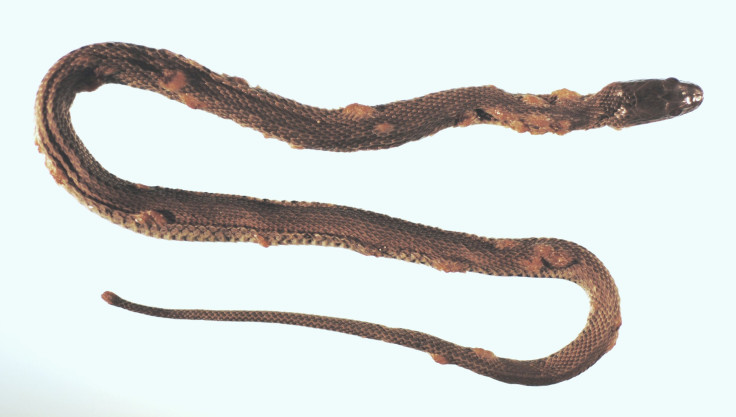Fungal Disease Could Kill Off Snakes Around The World

People who are deathly afraid of snakes might not consider this to be bad news, but scientists have found a potentially lethal fungal disease has spread through the wild snake population in the United States and Europe.
The disease comes from the fungus Ophidiomyces ophidiodiicola and “can infect snakes of many species regardless of their ancestry, physical characteristics, or habitats,” the American Museum of Natural History explained in a statement about new research into the snake health crisis. The fungal infection has already been found to hit 23 American wild snake species and a few European ones — and there could be more species affected around the world.
In the U.S., the affected snakes include rat snakes, milk snakes, garter snakes and vipers.
“The disease primarily affects snakes’ skin, forming lesions that spread quickly and can cover a large part of the body,” the AMNH said. “Although molting can resolve most cases, snakes can die from the infection. In addition, behavioral changes that snakes undergo while battling the disease — for example, spending more time basking as their skin molts — put them at increased risk of death by predation, environmental exposure, or starvation.”
The researchers who studied the snake fungal infection said in their study, in the journal Science Advances, that infectious diseases can reduce snake populations — potentially to the point of extinction — and have consequences for humans as well. They call for other scientists to be on the lookout for the newly studied infection, with a goal of better understanding how widespread the disease is, and to try to prevent its spread or develop treatments.
One thing that makes the fungal disease so formidable is that the scientists did not find an association between a specific behavior and contracting the fungus.
“Our model found no association other than ‘you are a snake,’” lead study author and herpetologist Frank Burbrink said in the AMNH statement. “This really is the worst-case scenario. … Our study suggests that first responders shouldn’t just be looking for certain types of snakes that have this disease, but at the whole community. All snakes could become infected, or already are infected.”
© Copyright IBTimes 2024. All rights reserved.











